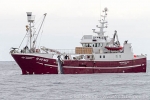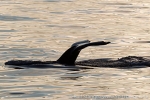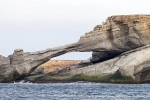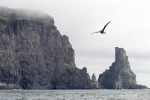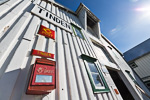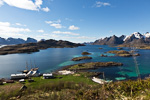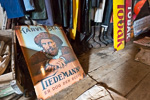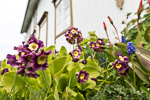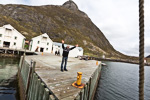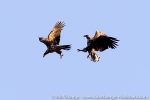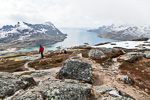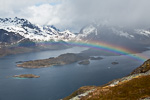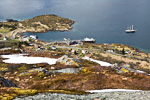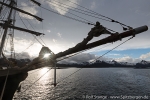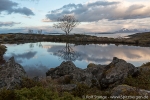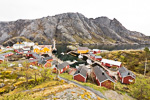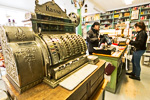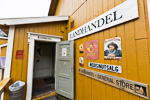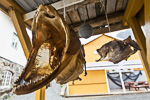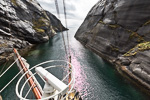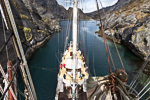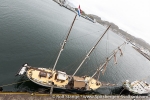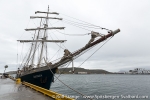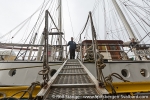-
current
recommendations- Liefdefjord
New page dedicated to one of Spitsbergen's most beautiful fjords. Background information and many photos.
- New Spitsbergen guidebook
The new edition of my Spitsbergen guidebook is out and available now!
- Liefdefjord
New page dedicated to one of Spitsbergen's most beautiful fjords. Background information and many photos.
Seitenstruktur
-
Spitsbergen-News
- Select Month
- April 2024
- March 2024
- February 2024
- January 2024
- December 2023
- November 2023
- October 2023
- September 2023
- August 2023
- July 2023
- June 2023
- May 2023
- April 2023
- March 2023
- February 2023
- January 2023
- December 2022
- November 2022
- October 2022
- September 2022
- August 2022
- July 2022
- June 2022
- May 2022
- April 2022
- March 2022
- February 2022
- January 2022
- December 2021
- November 2021
- October 2021
- September 2021
- August 2021
- July 2021
- June 2021
- May 2021
- April 2021
- March 2021
- February 2021
- January 2021
- December 2020
- November 2020
- October 2020
- September 2020
- August 2020
- July 2020
- June 2020
- May 2020
- April 2020
- March 2020
- February 2020
- January 2020
- December 2019
- November 2019
- October 2019
- September 2019
- August 2019
- July 2019
- June 2019
- May 2019
- April 2019
- March 2019
- February 2019
- January 2019
- December 2018
- November 2018
- October 2018
- September 2018
- August 2018
- July 2018
- June 2018
- May 2018
- April 2018
- March 2018
- February 2018
- January 2018
- December 2017
- November 2017
- October 2017
- September 2017
- August 2017
- July 2017
- June 2017
- May 2017
- April 2017
- March 2017
- February 2017
- January 2017
- December 2016
- November 2016
- October 2016
- September 2016
- August 2016
- July 2016
- June 2016
- May 2016
- April 2016
- March 2016
- February 2016
- January 2016
- December 2015
- November 2015
- October 2015
- September 2015
- August 2015
- July 2015
- June 2015
- May 2015
- April 2015
- March 2015
- February 2015
- January 2015
- December 2014
- November 2014
- October 2014
- September 2014
- August 2014
- July 2014
- June 2014
- May 2014
- April 2014
- March 2014
- February 2014
- January 2014
- December 2013
- November 2013
- October 2013
- September 2013
- August 2013
- July 2013
- June 2013
- May 2013
- April 2013
- March 2013
- February 2013
- January 2013
- December 2012
- November 2012
- October 2012
- September 2012
- August 2012
- July 2012
- June 2012
- May 2012
- April 2012
- March 2012
- February 2012
- January 2012
- December 2011
- November 2011
- October 2011
- September 2011
- August 2011
- May 2011
- April 2011
- March 2011
- February 2011
- January 2011
- December 2010
- November 2010
- September 2010
- August 2010
- July 2010
- June 2010
- May 2010
- April 2010
- March 2010
- February 2010
- November 2009
- October 2009
- August 2009
- July 2009
- June 2009
- May 2009
- April 2009
- March 2009
- February 2009
- January 2009
- December 2008
- November 2008
- October 2008
- August 2008
- July 2008
- June 2008
- May 2008
- April 2008
- March 2008
- February 2008
- April 2000
- Select Month
-
weather information

| THE Spitsbergen guidebook |
Home → May, 2015
Monthly Archives: May 2015 − Travelblog
Ice
Sun
31 May
2015
It is late in the evening, the sun is shining on coast and mountains south of Bellsund – not a good time to spend ages with the computer, writing a lot of text. I rather spend the time watching the scenery and looking for a potential polar bear somewhere on shore.
A lot of ice blocking Hornsund today, unexpectedly – but beautiful. And hundreds – no: thousands! – of Harp seals ☺ an early season specialty.
- gallery anchor link: #gallery_675
Click on thumbnail to open an enlarged version of the specific photo.
Whaling
Sat
30 May
2015
The further we came north, the better the weather. The stiff breeze eased out until the water surface became oily, just moved by the gentle swell, shining in the evening sun. Best conditions to find some whales!
We were not the only ones in the area looking for whales, but little did we know that the intentions of the other boat that came into sight were far less peaceful. The seemingly innocent boat Reinebruen from Svolvær (Lofoten, Norway) turned out to be a whale catcher, with a crow’s nest and a harpoon gun on the bow, and while we were watching a young Humpback whale, we heard the first shot being fired in the distance. Several more shots followed over the next couple of minutes, and we saw a smaller whale splashing under the bow of the whaler. It fought the pain of the steel harpoon in its belly for 5-6 minutes until it died.
It is not a secret that Norway issues well beyond 1000 licenses for Minke whales to its whaling fleet every year, and sometimes we see whaling ships in Norwegian ports including Longyearbyen. But seeing a whaler in deadly action is something different. I had never seen that before and I did not have an idea of the impression it would make on me to see how a whale is shot, dies and is pulled up on deck.
The crew of the Reinebuen turned the ship several times quickly, obviously trying to move the strongly bleeding whale out of our sight. They know what the world things about this.
Finally they went their way and we went ours. I had a bad feeling in my stomach and weak knees, as if I had just become witness to a murder. Well, this was pretty much the case, in a wider sense.
- gallery anchor link: #gallery_674
Click on thumbnail to open an enlarged version of the specific photo.
Soon, two more Humpback whales appeared under the midnight sun, happy and alive, not knowing that a slightly remoter relative had just died in a very bloody and painful way. Spirits on board were rising noticeably. Admittedly, I was not yet up for it. The emotional change from slaughter to observation of almost the same wonderful animal was just a bit too fast for me, so I watched it slightly mechanically, took my photos and was then happy to finish the day.
Bear Island
Sat
30 May
2015
29th/30th May 2015 – There is nothing much to say about the crossing. Wind and waves made it an experience of limited pleasure, and presence during meals was visibly reduced. Well, it was not dramatic, but not really popular either. No sightings of whales, only small groups of dolphins every now and then. The better that we made good speed, so we reached Bear Island already mid-day of the 29th. We kept on the southeastern side, as this side offered the best shelter available from wind and waves, and soon we had found a suitable landing site.
From the distance, Bear Island may seem a grey, empty rock in the ocean, but a closer look reveals all the treasures of nature you can imagine of a remote, small island in the Arctic. An impressive coastal landscape with bird cliffs, various geomorphological phenomena including frost-patterned ground and karst springs and so on. The feeling of remoteness and exposure is amongst the best parts of the Bear Island experience, especially in quiet moments when all you hear is the wind. We spend a rather long afternoon on the island, roaming around from the river mouth in Ærfuglvika to the seabird colony at Kapp Ruth, passing some small, mostly still frozen lakes in flat tundra towards the river Jordbruelva, which we followed between steep snow-covered river banks, until we returned to Kapp Maria with its impressive rock cave Kvalkjeften (whale jaw) and a huge hole in the rocky ground, through which you see the surf 15 m lower down.
A calm night at anchor in the shelter of the island was certainly amongst the highlights of the day for many.
- gallery anchor link: #gallery_672
Click on thumbnail to open an enlarged version of the specific photo.
Next morning, we cruised around the southern end of Bear Island, where nature has created some of the most impressive cliffs in the north Atlantic. The seas and winds being too high for any Zodiac operations, we enjoyed the views from the ship, in the presence of countless Northern fulmars, before we continued northwards, course for Spitsbergen.
Tromsø
Tue
26 May
2015
Tromsø, Paris of the north, traditional gateway to the Arctic and our stepping stone towards Bear Island and Spitsbergen, presents itself in the best of weather. Visits to the museums dedicated to the Arctic, excursions to the viewpoint on Fløya and some time to relax in zivilisation, before we continue towards the Barents Sea.
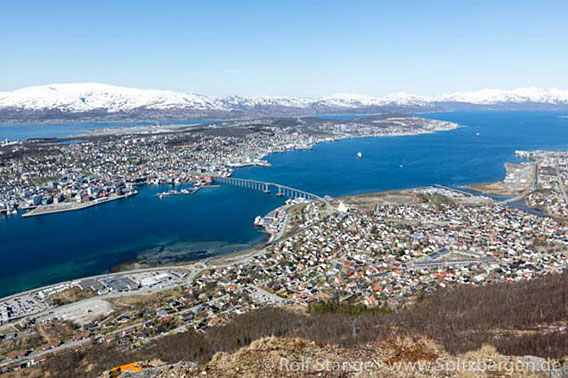
Tinden
Mon
25 May
2015
Two years ago, we „discovered“ Tinden, an old trading post on the outer coast of the Vesterålen islands, beautifully situated in a bay under a steep mountain, hidden behind some small islands. We did not have any idea back then what to expect, we had just been told that it should be a nice place. Which was quite an understatement. The old trading post was abandoned long time ago, but has been beautifully revived as a museum, in a similar way as Port Lockroy in Antarctica. Tinden is a small, but lovely ensemble of white wooden houses, shelves squeezed with early 20th century items, there is even a flower garden with old species which they had to re-gather on churchyards. The manager of the place, Kjell, is a great character and a very valuable part of the experience.
So this is what we could enjoy today, and to make things even better, the sun was shining on the whole setting, so a little walk up the steep slope behind the buildings was definitely a good thing to do.
- gallery anchor link: #gallery_670
Click on thumbnail to open an enlarged version of the specific photo.
Hard to imagine that there had been a storm here some months ago, strong enough to destroy several houses here that had survived countless storms during many decades. An irreplacable loss, as nobody can tax or even replace all the historical artefacts lost. And I don’t really want to know how strong the winds were that flattened those sturdy buildings. How nice is today’s light breeze.
By the way, some 360 degree impressions from Tinden are already available. I should make an updated version now, as I got a sunny addendum today.
Raftsund & Vesterålen
Sun
24 May
2015
We watch the southern Vesterålen islands passing by while we are making miles to the north. Scenic coastlines and mountains, sea eagles and even orcas make the afternoon a very pleasant and interesting experience.
- gallery anchor link: #gallery_668
Click on thumbnail to open an enlarged version of the specific photo.
Digermulen
Sun
24 May
2015
We are certainly not the first tourists in this area. The German emperor Wilhelm II. was here in 1889. If he had only spent more time traveling and less with politics, it might have saved the world a lot of trouble, who knows.
Despite all the troubles that he had with his job – his own fault! – he managed to travel to Norway quite a lot. And twice he made it to Digermulen, a little village – about 300 inhabitants – at the southern end of Raftsund. That is the strait that separates Austvågøya (Lofoten) from Hinnøya (Vesterålen). There is a mountain next to Digermulen that is called Digerkollen. It is not so terribly diger (big), actually not at all with an altitude of 384 m, that is something we can do. And nobody has to carry up plates of granite with our names incarved after us. We are more than happy with our signatures in the Gipfelbuch (what is that in English?).
- gallery anchor link: #gallery_666
Click on thumbnail to open an enlarged version of the specific photo.
The way up, across stones, mud and snow, takes about 1 ½ hours, with an interesting mixture of rain, sun, snow and sun again. Luckily, it remains sunny as we reach the top, so we can enjoy splendid views of Raftsund, Hinnøya, Austvågøya and and a number of smaller islands. An imperial view, indeed!
Heimøya
Sat
23 May
2015
It is part of the fun to discover new places. If you haven’t been to a place, then it may be a good reason to go there one day. After an interesting afternoon – sometimes the wind needs about a minute up here to turn 180 degrees, which is interesting for a ship under sail – we came to Heimøya. A little island, separated from its little neighbouring island by a little channel. The Norwegians have obviously discovered Heimøya as a good place to build weekend houses, so there is quite a few of them there. Is that the reason for the name, or was it the other way around?
- gallery anchor link: #gallery_663
Click on thumbnail to open an enlarged version of the specific photo.
We still have a real sunset and, accordingly, a real evening with real evening light.
Nusfjord
Sat
23 May
2015
Nusfjord is the first port of call for us, so the rest of the night is calm, apart from the slightly disharmonic music of singing fenders. A very pleasant surprise for most on board to wake up on these lovely surroundings. Nusfjord is kind of a museum village, a time capsule that moves the visitor back to the early 20th century, as you are walking into the old „Landhandel“ or around the little natural harbour with its traditional rorbuer, simple wooden buildings where fishery workers were accommodated periodically in the old days. Kittiwakey are making the same noise today as they did 100 years ago. And the rain showers make you as wet as they did 100 years ago, Gore Tex or not.
- gallery anchor link: #gallery_662
Click on thumbnail to open an enlarged version of the specific photo.
As a final highlight, Captain Joachim is navigating Antigua around the little island of Brattholmen, through a scenic natural channel. A miniature version of Trollfjord, kind of a warm-up exercise. Perfectly enjoyed from the best place, up on the mast ☺
Bodø
Fri
22 May
2015
Yeeha – today I am starting my northern sailing season! The 3 mast barkentine Antigua is waiting in the harbour of Bodø in north Norway. She has taken 2 weeks to sail up here from Hamburg. I am covering the same distance a bit higher and faster.
A day later, the international group comes on board. Some language mathematics: German + Dutch = English.
- gallery anchor link: #gallery_660
Click on thumbnail to open an enlarged version of the specific photo.
A gentle southwesterly breeze is blowing, while we are leaving the harbour of Bodø, steaming into Vestfjord. 50 nautical miles of open water between here and Reine on Moskenesøya, one of the southern Lofoten islands. Soon, the sails are up. The sea is moderate, but enough for some on the first evening. Others enjoy sailing into the evening sun, while the famous Lofoten wall („Lofotveggen“) is slowly appearing out of a cloud.
News-Listing live generated at 2024/April/24 at 22:55:21 Uhr (GMT+1)


